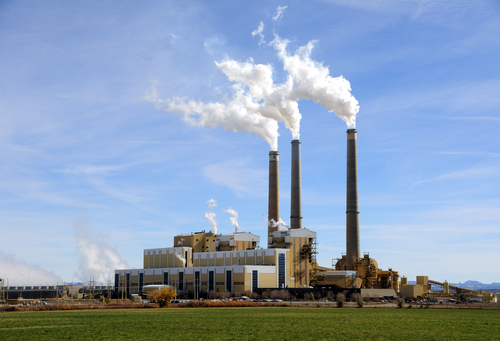EEI takes targeted strike at EPA’s power plant emissions rule

With grid reliability at stake, the association representing America’s investor-owned electric companies on Wednesday formally challenged an Environmental Protection Agency (EPA) rule that sets new pollution limits on coal-fired power plants.
The Edison Electric Institute (EEI) filed a petition for review in federal court of the EPA’s April 25 final Clean Air Act Section 111 rules, which aim to reduce greenhouse gas (GHG) emissions from existing power plants — which account for 25 percent of U.S. GHG pollution — and ensure that new combustion turbines are built to minimize emissions. The final rule goes into effect on July 8.
“Our action today is necessary to protect customers from regulations that rely on not-yet-demonstrated technology and unrealistic compliance timelines that risk undermining those goals,” EEI President and CEO Dan Brouillette said in a statement issued May 22.
Specifically, the EPA’s package of rules includes a final rule that directs existing coal-fired and new natural gas-fired power plants to reduce 90 percent of their greenhouse gas pollution by either 2032 or 2039.
The EPA also imposed three additional regulations on coal-burning power plants: stricter limits on their emissions of mercury; tighter restrictions on their seepage of toxic ash into water supplies; and reductions in their pollutants discharged through wastewater by more than 660 million pounds per year.
The EPA’s limits on coal-fired power plant emissions will further strain the reliability of the nation’s grid, according to Brouillette, and impact the generation sources that will be used to reliably power America’s increasingly electricity-dependent economy.
EEI seeks judicial review of the agency’s determination that carbon capture and storage (CCS) should be the basis for compliance with other portions of the 111 rules, said Brouillette.
“EPA’s record and the docket do not support the agency’s finding that CCS is adequately demonstrated for broad deployment across our industry,” he said, pointing out that CCS is an emerging technology.
“EPA’s implementation timelines do not align with the current reality,” he added. “There is not a single coal- or natural gas-based power plant operating today that meets the CCS requirements set by EPA.”
In fact, throughout the rulemaking process, EEI repeatedly raised concerns about CCS not yet being ready for full-scale, industry-wide deployment. “Nor is there sufficient time to permit, finance, and build the infrastructure needed for compliance by 2032,” Brouillette said.
Other stakeholders agree, including the American Petroleum Institute (API) and the Electric Power Supply Association (EPSA), which represents America’s competitive power suppliers.
EEI also filed a motion asking the U.S. Court of Appeals for the District of Columbia Circuit for permission to defend certain portions of the EPA’s rule as an intervenor on the agency’s behalf. Doing so would permit EEI to defend specific elements of the EPA’s rule, according to Brouillette.
“We support EPA’s authority to regulate greenhouse gas emissions under the Clean Air Act, as well as the agency’s efforts to provide paths to additional carbon reductions and cleaner resources,” he said. “We are intervening today to preserve our ability to defend, if needed, elements of the final 111 rules that are consistent with the ongoing clean energy transition and that do not create reliability impacts for customers.”
At the same time, Brouillette said that electric companies across the country continue to invest in CCS and other 24/7 clean energy technologies. They also plan to actively deploy them when those technologies satisfy industry performance requirements and support reliability at costs that are affordable for customers, he said.
“We are committed to finding solutions, but we can’t bet our energy future on a technology that is not yet ready for industry-wide deployment,” said Brouillette. “We are working to meet the growing demands for electricity and to advance the nation’s clean energy goals responsibly, without jeopardizing customer affordability and reliability.”
